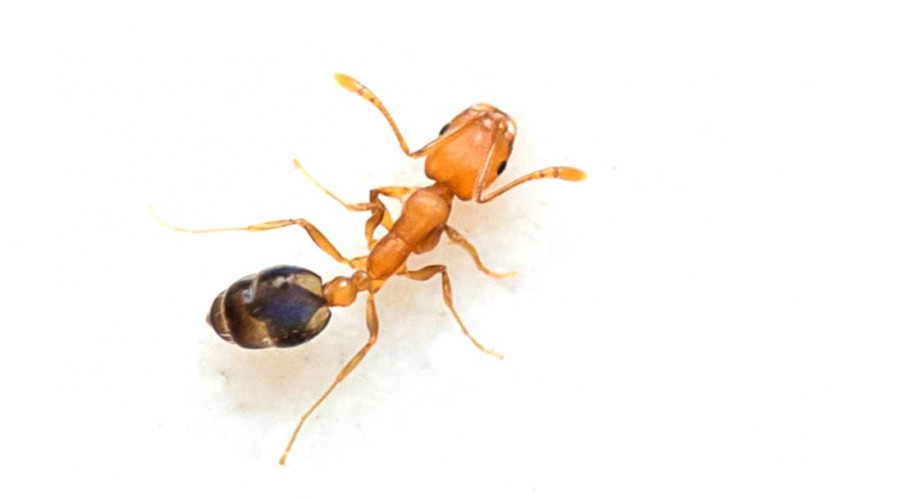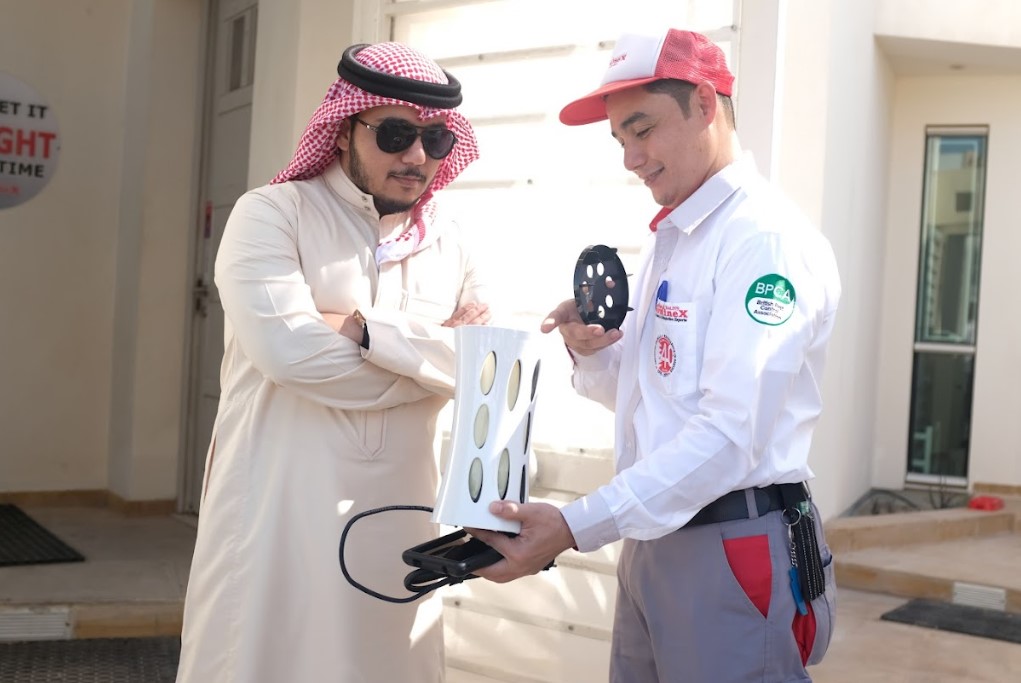Foraging worker ants cause a nuisance as they travel widely in search of food, following well-defined trails and clustering around the food source. They are attracted to sweet or fatty substances in kitchens, pantries, storerooms and warehouses. In hospitals they have been found feeding on septic dressings, soiled linen and excrement.
They are obviously an unpleasant sight in food areas and may damage or taint food intended for human consumption.
Ants are the most prolific and successful group of insects. Their nests can be found almost anywhere, in lawns, under stones or wood, in decaying trees, under buildings, in cavity wall and roof voids. Anywhere that affords them protection.
Ants are common in Bahrain and there are many species all with different habits and feeding preferences. You cannot live in Bahrain without having some sort of contact with one ant species or another. Some of the most common ones are:
BLACK HOUSE ANTS – OCHETELLUS SPP

The most common ant species in gardens. Size is 4 mm, common in garden areas. During hot season they commonly enter internal area to avoid heat. They produce formic acid and sting when disturbed. The sting can trigger allergic reaction. Commonly found entering into the buildings through crevices on window frames or on the walls. The worker ants are attracted sugary material.
CARPENTER ANTS – CAMPONOTUS SP

Biggest ant species in Bahrain, size reach to 1.2 cm. Its damage is often mistaken with termite damage. Whilst termites are eating the wood, the Carpenter ant does not eat the wood. It creates the nest inside the wood and they damage the wood for having space for the nest only. When disturbed they can create multiple satellite nests making it more difficult to eliminate the colony. Treatment requires several follow up visit in case the nest is hidden.
PHARAOH ANT

Tiny reddish ant species. They are attracted to high protein food source, commonly infesting hospitals and feed on blood. They build multiple nests which makes it difficult to control by regular pest control methods


 Instagram
Instagram  Facebook
Facebook